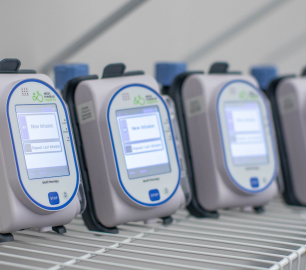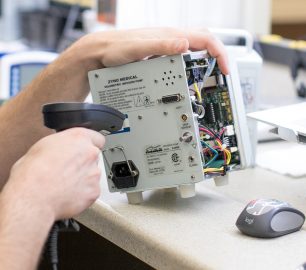Curlin Medical (now owned by Moog Inc.) is responsible for creating two of the most widely used ambulatory infusion pumps, the Curlin 4000 and 6000 (also known as the 4000 CMS and 6000 CMS). The Curlin 4000 quickly became favored in the market due to its dependability, ease of use and flexibility. The Curlin 4000 has proven to be a versatile pump, able to be used for continuous, variable, intermittent, TPN and PCA therapies. It quickly became a fixture in the I.V. therapy market.
In the early 2000s “smart” pumps were introduced to address concerns of patient safety. These new pumps included the ability to store dosing guidelines in a drug library on the pump, warning clinicians of a potentially unsafe infusion. The Curlin 6000, an updated version of the 4000 with an improved viewing screen, better parts, and a drug library was introduced to meet this demand.
In 2017, both the 4000 and 6000 are still being used for infusion therapy. Even though the 4000 is an older pump, it has proven trustworthy. Its dependability and longevity have made some users resistant to a switch to the 6000. However, the 4000 has been discontinued for some time and officially reached its end of life on December 31st 2015.
According to Moog, “This means that Moog Medical Devices Group (MMDG) has ceased all support and servicing of and no longer manufactures or distributes replacement parts for Curlin 4000 CMS pumps. Any Curlin 4000 CMS pump currently in use may remain in service until it no longer operates within the specifications described in the Owner’s Manual. Any use of a Curlin 4000 CMS pump, once it no longer operates within MMDG’s specifications, may result in serious harm to patients. MMDG no longer performs preventive maintenance or other repair services for Curlin 4000 CMS pumps, and any Curlin 4000 CMS pumps sent to MMDG without an RMA will be returned unrepaired.”
While some may still favor the 4000 due to their comfort using the product, transitioning to another pump is increasingly no longer a question of preference. Clinicians holding out may be faced with unplanned transitions due to lack of supply – certainly not an ideal scenario.
Even if you aren’t quite ready to turn your 4000s in, now is the time to prepare for the inevitable. Some things to consider (from our Time critical in transition from Triton fp article):
Clinical
- What therapies will be delivered through the chosen pump?
- How durable is the device?
- Is the software upgradeable if there are new releases?
- How long has the pump been on the market?
- Does the pump use a proprietary set?
- What are the max flow and volume rates?
- What is the clinical support and what partners are there in the industry to help triage issues?
Operational
- What is the cost?
- How and who can service the pump?
- Are there opportunities to rent the pumps during peak census?
- What are the set configurations offered and the cost associated?
- Who does the implementation with our facilities and staff?
- What is the ongoing support?
Contact Right Way Medical today to discuss your options to lease, rent or purchase Curlin 6000s. By the way, the Curlin 4000 certainly isn’t alone, read our article on the CADD Prizm.



